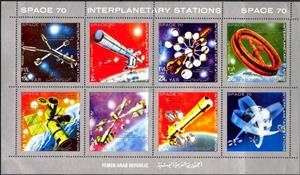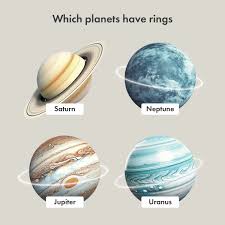Mini Sheet: Interplanetary station (Yemen, Arab Republic 1970)
Interplanetary station (Yemen, Arab Republic 1970)
21 July (Yemen, Arab Republic ) within release Interplanetary station goes into circulation Mini Sheet Interplanetary station face value 10 Yemeni buqsha
| Mini Sheet Interplanetary station in catalogues | |
|---|---|
| Michel: | Mi: YE-AR 1174-1180KB |
Mini Sheet is square format.
Also in the issue Interplanetary station:
- Stamp - Interplanetary station face value 8;
- Stamp - Interplanetary station face value 10;
- Souvenir Sheet - Interplanetary station face value 10;
- Stamp - Project McDonnel Douglas USA planned for 1975-1980 face value 1¾;
- Stamp - Project McDonnel Douglas USA planned for 1975-1980 face value 2;
- Stamp - Project Boeing, USA planned for 1990 face value 2¼;
- Stamp - Project McDonnel Douglas USA planned for 1975 face value 5;
- Mini Sheet - Interplanetary station face value 10;
- Souvenir Sheet - Interplanetary station face value 10;
Mini Sheet Interplanetary station it reflects the thematic directions:
Outer space (or simply space) is the expanse that exists beyond Earth's atmosphere and between celestial bodies. It contains ultra-low levels of particle densities, constituting a near-perfect vacuum of predominantly hydrogen and helium plasma, permeated by electromagnetic radiation, cosmic rays, neutrinos, magnetic fields and dust. The baseline temperature of outer space, as set by the background radiation from the Big Bang, is 2.7 kelvins (−270 °C; −455 °F)
A planet is a large, rounded astronomical body that is generally required to be in orbit around a star, stellar remnant, or brown dwarf, and is not one itself. The Solar System has eight planets by the most restrictive definition of the term: the terrestrial planets Mercury, Venus, Earth, and Mars, and the giant planets Jupiter, Saturn, Uranus, and Neptune. The best available theory of planet formation is the nebular hypothesis, which posits that an interstellar cloud collapses out of a nebula to create a young protostar orbited by a protoplanetary disk. Planets grow in this disk by the gradual accumulation of material driven by gravity, a process called accretion.


